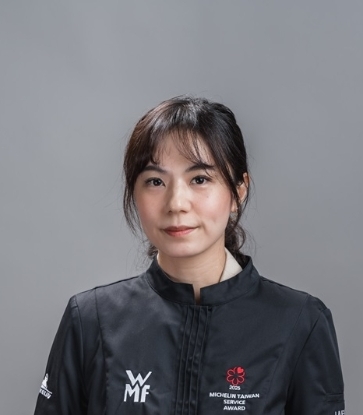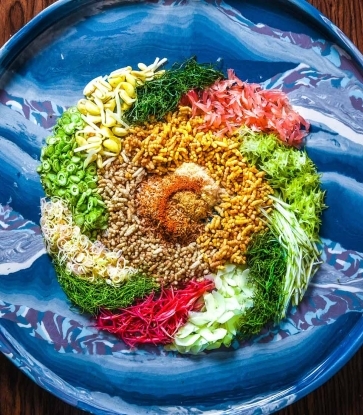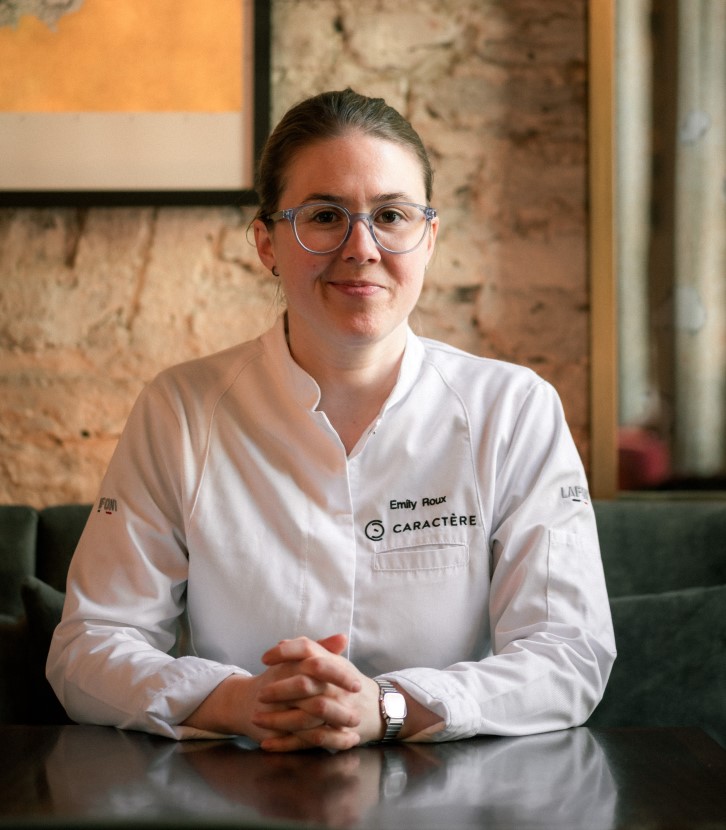At The MICHELIN Guide Taiwan 2025 ceremony, a brand-new accolade took the spotlight: The MICHELIN Guide Opening of the Year Award. Presented to individuals and teams for the successful opening of a dining venue over the past 12 months, with a creative degustation concept and a cuisine approach which has had an impact on the local gastronomic scene, the award recognizes both creativity and impact.

The inaugural honor went to Chef Jim Yang and his team at aMaze, newly distinguished with One MICHELIN Star. As Terence Ong, managing director of Pernod Ricard Taiwan, remarked during the ceremony: “Echoing The Glenlivet’s spirit of innovation, these trailblazers remind us that true progress happens when creativity meets discipline, and vision is paired with relentless execution.”
Recalling the moment his name was announced, Yang shared that he embraced restaurant manager Ann Huang with joy. “I nearly cried, but told myself this is a moment to smile,” he says. For the 62-year-old chef, the recognition felt almost surreal — a profound gift in what he calls the “third chapter” of his life.
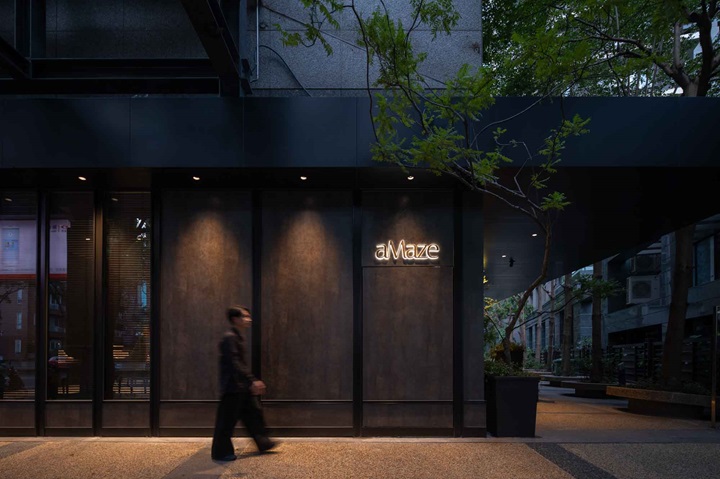
A brilliant third act
Yang often divides his life into three chapters. His first was in the trade industry. His second spanned nearly three decades at the MICHELIN-Starred Hangzhou restaurant Tien Hsiang Lo at The Landis Taipei, where he earned his reputation as “Chef Zong,” deeply rooted in Jiangzhe culinary traditions.Now, in his third chapter, Yang has returned to the spotlight at aMaze, working shoulder-to-shoulder with a new generation of chefs.
After retiring from The Landis, he traveled extensively — throughout Taiwan, South America and France — and at one point considered opening a casual noodle shop serving his personal specialties to a few loyal and closed customers. “I couldn’t leave the kitchen. My plan was a small noodle house with a private kitchen — one or two tables a day, relaxed and flexible,” he laughs.
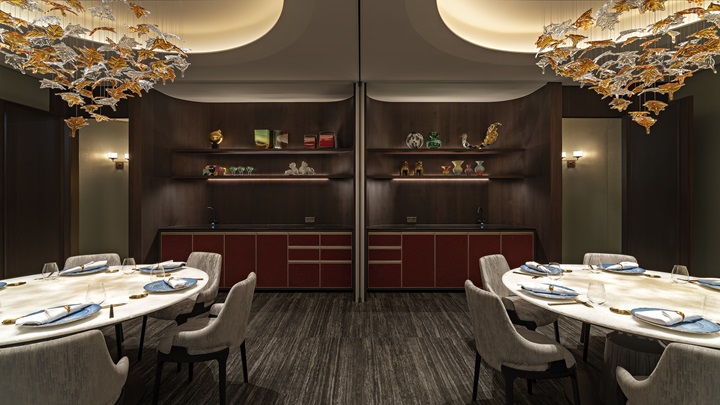
But friends and diners were unwilling to let his craft fade. Persistent invitations to open a restaurant ultimately led to aMaze — a space free from the constraints of hotel systems and rigid culinary categories, opening the door to new possibilities.
“This is my third act, and I want it to shine,” Yang says. “But this time, the brilliance isn’t mine alone — it’s something I’m building together with the younger generation.”
RELATED: From the MICHELIN Guide Taiwan 2025: Inspectors Reveal 5 Key Trends Shaping the Dining Scene
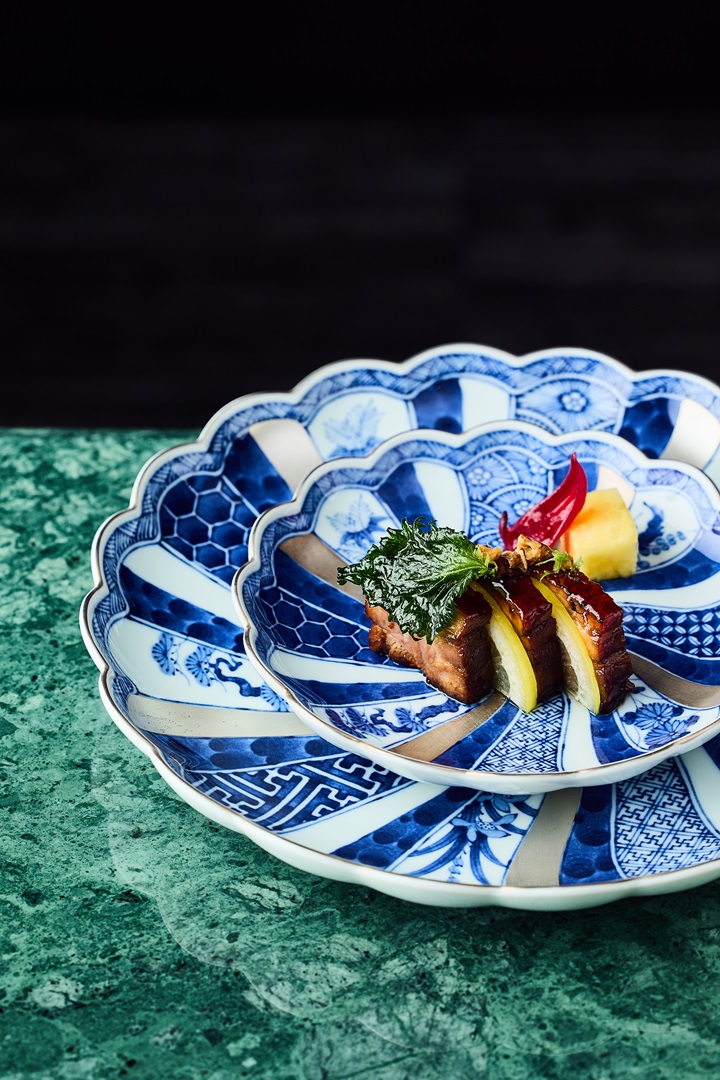
Tradition without orthodoxy: reimagining forgotten classics
At aMaze, Yang redefines the possibilities of Chinese cuisine. He believes that while every regional cuisine has its traditions, there is no single orthodoxy: the spirit and essence of tradition should be preserved but never confined to a rigid form.
Rooted in Jiangzhe cuisine, Yang incorporates diverse influences. His years in hotel kitchens exposed him to Western ingredients and guest chefs, broadening his perspective on both techniques and ingredients — a driving force behind his culinary innovation.
His philosophy comes alive on the aMaze table. Take Jiangzhe’s famous Wuxi braised spare ribs: instead of relying solely on Zhenjiang vinegar, Yang blends in balsamic vinegar for layered acidity, balanced with candied yellow lemon to lighten the richness. The pork itself is purebred Duroc with a balanced fat-to-lean ratio, slow-braised at low temperature to a glossy finish, without cornstarch thickeners. (Above right: pork belly|charcoal ©aMaze)
“The sweet-salty essence remains, but the flavors are softer and more nuanced,” he explains. “The soul of tradition must endure, but it should never be shackled by the method.
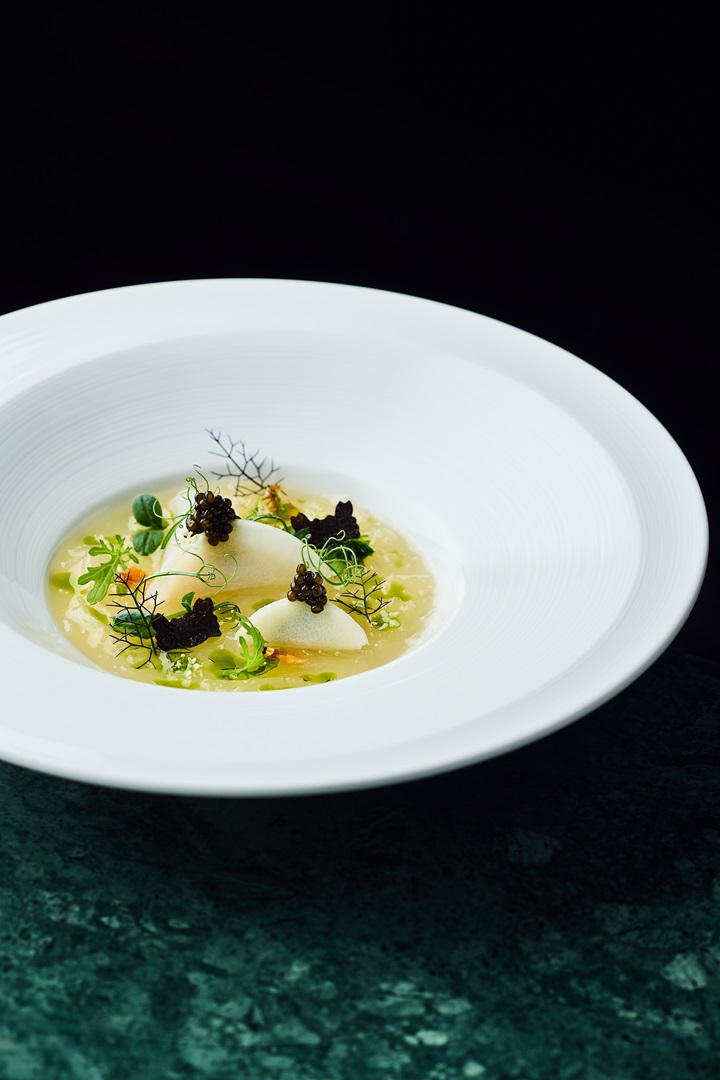
Another dish draws inspiration from the childhood memory of scrambled eggs with tomatoes. Yang folds together sun-dried tomatoes and microgreens, enhancing the texture with stracchino cheese. “I want guests to taste home, but in a way that feels refreshing and surprising,” he says.
He also reinterprets the Sichuan classic vegetarian bird's nest, slow-simmering shredded winter melon in superior broth. To this, he adds Jiangzhe-style fish balls with a contemporary touch: hand-pounded scallop and leopard coral grouper wrapped in thin radish and bamboo slices, finished with sakura shrimp and caviar — a seamless blend of innovation and heritage. (left image: fish ball |caviar |white gourd ©aMaze)
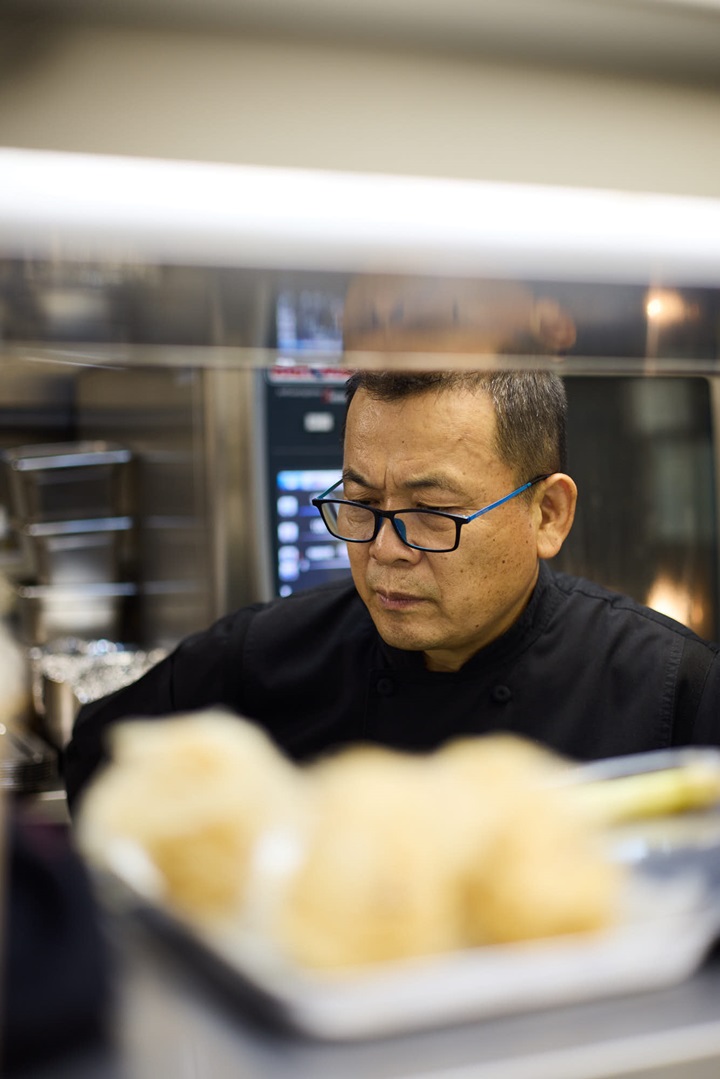
From books to the kitchen: curiosity as a guide
Much of Yang’s inspiration comes from voracious reading and boundless curiosity. “I love drawing from old texts, especially dishes with no fixed recipes,” he says. For example, he once recreated beggar’s chicken as described in The Legend of the Condor Heroes, a Chinese martial arts novel, relying on both imagination and experience to bring it to life.
He also frequently reconstructs flavors described by regulars, reviving their personal culinary memories. “To truly master cooking, you must know how to eat,” he says. Guests’ wide-ranging references, he adds, often spark his creativity. (right image ©aMaze)
Yang’s curiosity extends to science as well. To him, Chinese cuisine is inseparable from physics and chemistry: “Heat and tools are physics, while seasoning is chemistry,” he explains. Understanding these principles allows a chef to grasp a dish objectively and create with freedom.
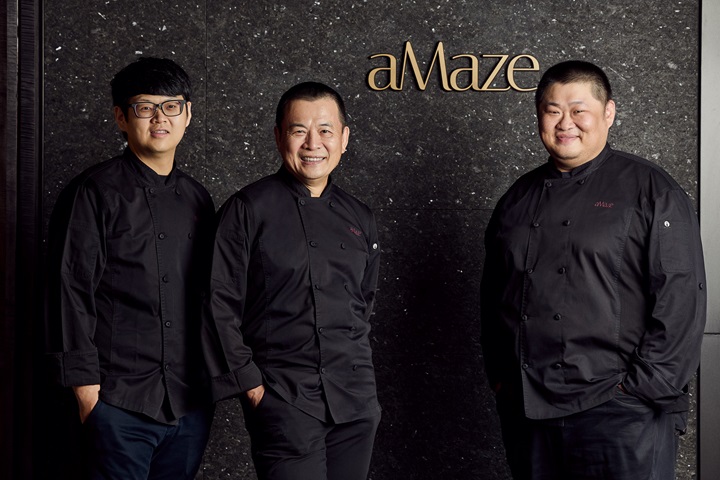
Passion as the only ticket
Yang emphasizes that aMaze is far from a solo endeavor. Its creative energy comes from the entire team, with most kitchen staff in their 30s and a front-of-house crew in their 20s.
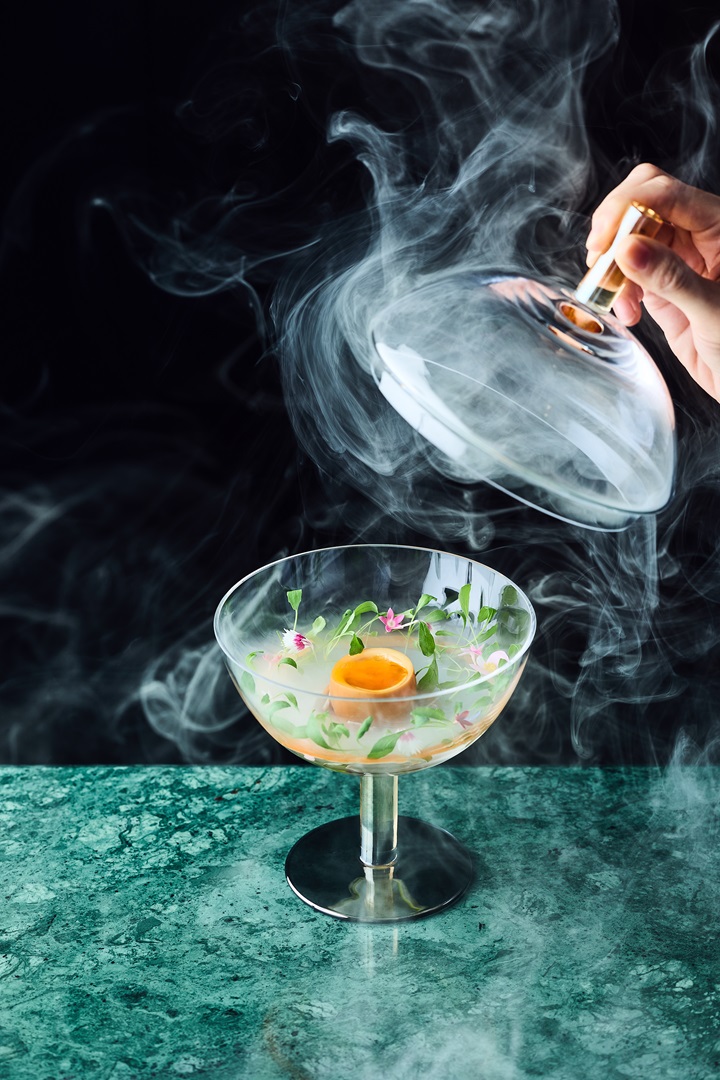
“They’ve experienced different cuisines, they think flexibly and they bring fresh perspectives,” he says. “That sparks creativity greater than the sum of its parts.” Take the dish inspired by scrambled eggs with tomatoes, for example: it was born from a young chef’s suggestion to pair tomato with dairy — but not simply milk or cream. After several trials, they settled on stracchino cheese. (left image: duck egg |tomato |stracciatella ©aMaze)
Menu development starts with Yang establishing the traditional flavor pillars, after which the team brainstorms, blending Chinese and Western elements. Their collaborative spirit shows in desserts like a reinterpretation of mango, orange and coconut milk using Irish blue cheese to evoke Chinese fermented tofu.
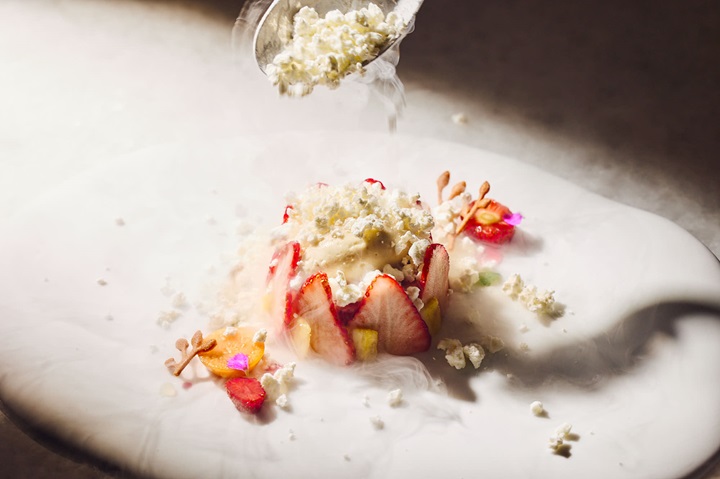
In beef tartare, pickled long beans and peeled chili replace capers and fermented peppers, and in squid dishes, fermented mustard greens stand in for wasabi to provide a spicy kick.
“I want them to draw from me,” Yang says. “Cooking knowledge isn’t like a textbook. Ask me, and I’ll expand from there.” For him, mentoring is about helping young chefs discover their own culinary voice and ensuring the flame of Chinese cuisine continues to burn.
This is why his sole criterion for new team members is passion. “Without passion, even the most skilled hands won’t produce soulful food,” he says. With it, however, learning accelerates and deepens beyond expectation. Yang eagerly shares his knowledge, encourages bold experimentation, and stays curious himself, adapting to new dining trends and ideas. This openness fosters a culture of growth and shared purpose within the team.
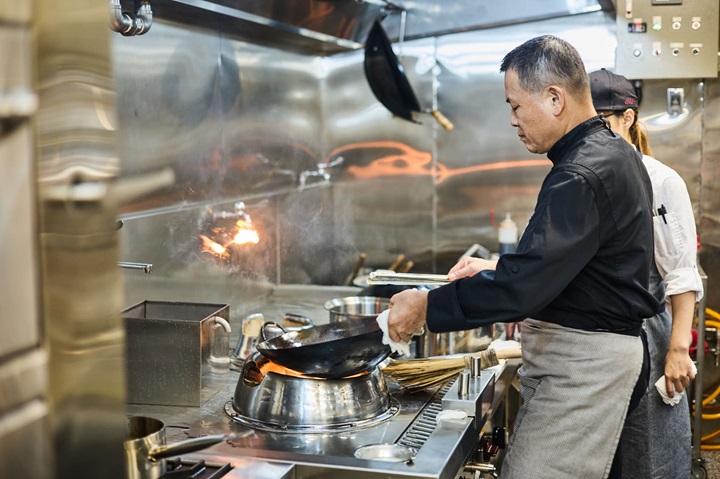
Passing the torch to the next generation
From his long years under a storied hotel brand to founding aMaze, Yang has learned to meet success with calm. Yet he recognizes that this journey is no longer his alone.This year, aMaze not only won the Opening of the Year Award but also earned its first MICHELIN Star. “We had no legacy halo to lean on — just step-by-step perseverance,” Yang says. “This award will help more people walk through our doors and experience the warmth and flavors we want to share.”
Even at his 60s, Yang’s eyes still shine brightest in the kitchen, fueled by his passion for cooking. For him, the award represents less personal glory than responsibility. Over the next three to five years, he hopes to see his younger teammates step into the spotlight on their own, while he quietly supports them from behind, keeping the fire alive.
Hero image: ©MICHELIN






